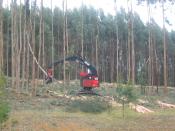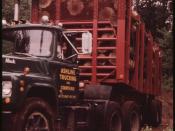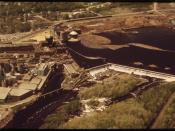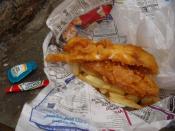A chip mill converts pulpwood into chips for use in paper making. Pulpwood is wood fiber that sawmills won't purchase: tops of trees, deformed trees, thinnings and undesirable tree species.
Here's how the process works: At a logging site, loggers will sort logs according to their highest and best use. Sawlogs make lumber; peeler logs make plywood; and pulpwood makes paper. A log truck driver picks up the pulpwood load and takes it to a chip mill where it is unloaded.
The pulpwood enters the mill through a gravity-fed chute that leads to a drum that removes the bark. Bark, a by-product of the chipping process, is burned by nearby mills for energy or is used as beauty bark (natural mulch) for landscaping.
From the debarker, the pulpwood travels to a chipper where knives cut it into chips about the size of a postage stamp. A conveyor belt carries the chips to storage or onto a railcar or chip truck.
Finally, the chips are transported to a mill to be made into pulp and paper.
-------------------------------------------------------------------------------- FAQs about chip mills -------------------------------------------------------------------------------- What species of trees are used to make paper? Are there sources of wood fiber other than pulpwood for making paper? Are chip mills noisy? Do chip mills stay in the same area for a long time? Do chip mills promote clearcutting? Do you export chips? Do chip mills encourage landowners to convert hardwood forests to softwood? Does a chip mill use lots of water? Do you own the forests from which the hardwood chips come? Have another question?





